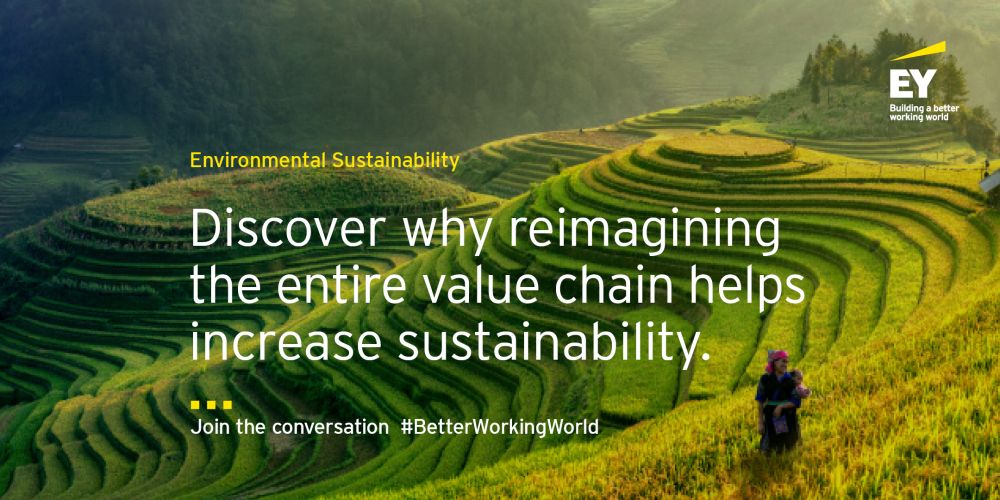Industrials need to put sustainability at the core of their business strategies
According to the World Resources Institute, three industrial subsectors are the fastest-growing sources of greenhouse gas (GHG) emissions: since 1990, emissions from industrial processes grew by 187%, followed by transportation (+79%), and manufacturing and construction (+56%). The indirect impact is even larger.

According to the World Resources Institute, three industrial subsectors are the fastest-growing sources of greenhouse gas (GHG) emissions: since 1990, emissions from industrial processes grew by 187%, followed by transportation (+79%), and manufacturing and construction (+56%). The indirect impact is even larger.
This track record, combined with increasing regulatory scrutiny and demands for more detailed sustainability disclosures in annual filings, should have industrial companies placing environmental, social and governance (ESG) issues at the top of their priority list to address. Yet, outside of certain subsectors with higher public profiles (e.g., automotive or chemicals), many industrial companies have been able to fly below the radar and avoid engaging meaningfully on sustainability issues. Longer product lifecycles, complex manufacturing processes, demanding customer requirements and mission-critical applications make implementing sustainability programs highly complex. Nevertheless, the ability to maintain the status quo is becoming increasingly unsustainable.
Industrial companies need a clear action plan to transform their innovation and business strategies in ways that put sustainability at the center and can create long-term value that’s good for business, people and the planet. According to the 2022 EY CEO Outlook Survey, 40% of industrial sector CEOs believe that becoming a sustainability leader reduces capital cost or provides a competitive advantage, and 22% believe that environmental sustainability ratings are important to attract investors.
Here are five areas where forward-thinking industrial companies are forging sustainability paths for others in the sector to follow:
- Make the commitment across the organization. Industrial leaders need to move beyond aspirational decarbonization objectives and toward anchoring sustainability principles across their operations. Consider developing and executing road maps that detail technology and infrastructure investments that will contribute to long-term sustainability targets, and embedding sustainability in core decision-making and incentive structures, such as KPIs, ROI assessments, product road maps and design principles.
- Put sustainability at the core of innovation and business strategies. Rather than bolting it on as an afterthought, industrial executives need to put environmental sustainability at the center of their innovation, product design and lifecycle planning, and even commercial models. Take sustainability into account from the outset so that designers can create products specifically crafted to use fewer and greener materials. Additionally, put long-term value at the fore when reimagining production lines or entire factories to reduce waste and increase energy efficiency. Additional considerations include dedicating part of the R&D budget to developing more sustainable materials and technologies, and building an internal innovation incubator where sustainability advances are a top priority.
- Reimagine the whole value chain. Industrial executives need to be evaluating all elements of their value chains through the lens of sustainability rather than individual parts. Assess all aspects of the supply chain and manufacturing processes as well as the environmental impact of products throughout their life cycle. By deploying digital technologies and connected devices, industrial companies can analyze the performance of products in the field to help customers increase efficiency and reduce waste. The insights generated from these types of customer interactions can provide short-term value with an ongoing revenue stream and long-term value by identifying areas for future innovation.
- Reinvent the supply chain. Industrial executives need to move past superficial sustainability assessments in favor of comprehensive supply chain transformations. This should include raising sustainability requirements for vendors and instituting accountability measures, as well as third-party certifications or more technology-driven solutions, such as the use of blockchain and advanced analytics to track input attributes from raw materials, all the way to the final product. When paired with ongoing diligence measures such as audits and on-site inspections, these measures can reduce risks and costs while improving quality and transparency.
- Partner with tech. Sustainability leaders in the industrial space are exploring emerging sources and technologies to reduce their energy consumption and carbon footprints. Green hydrogen, electrification, and carbon capture, usage and storage (CCUS) technologies are all on the table in the quest to meet net-zero targets. One of the best ways to stay on the leading edge of the sustainability technology frontier is through collaborative innovation with partnerships and alliances. While investing in emerging technologies may be outside the comfort zone for many industrial firms, some leaders believe the potential economic and environmental payoff from successful commercialization is worth the risk.
For industrial companies that make the effort to put sustainability at the center of their strategies, the benefits can be significant. Some companies with high ESG marks are securing valuation premiums. Others are seeing improvements in their commercial and market performance. These sustainability leaders are raising the bar for the industrial sector, and they are demanding that partners across their ecosystem do the same.
Yesterday’s sustainability-related innovations have become today’s table stakes. If industrial companies want to be relevant tomorrow, they need to lean in hard and fast to a sustainable future.
Discover why reimagining the entire value chain helps increase sustainability here.
The views reflected in this article are the views of the author and do not necessarily reflect the views of the global EY organization or its member firms.

_400_250_80_s_c1.jpg)




